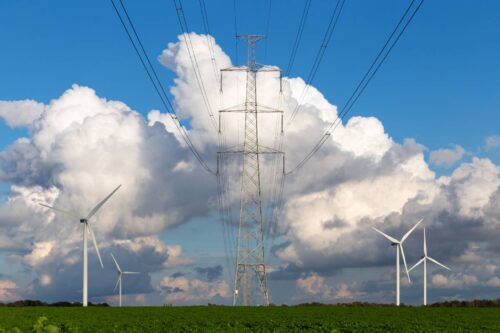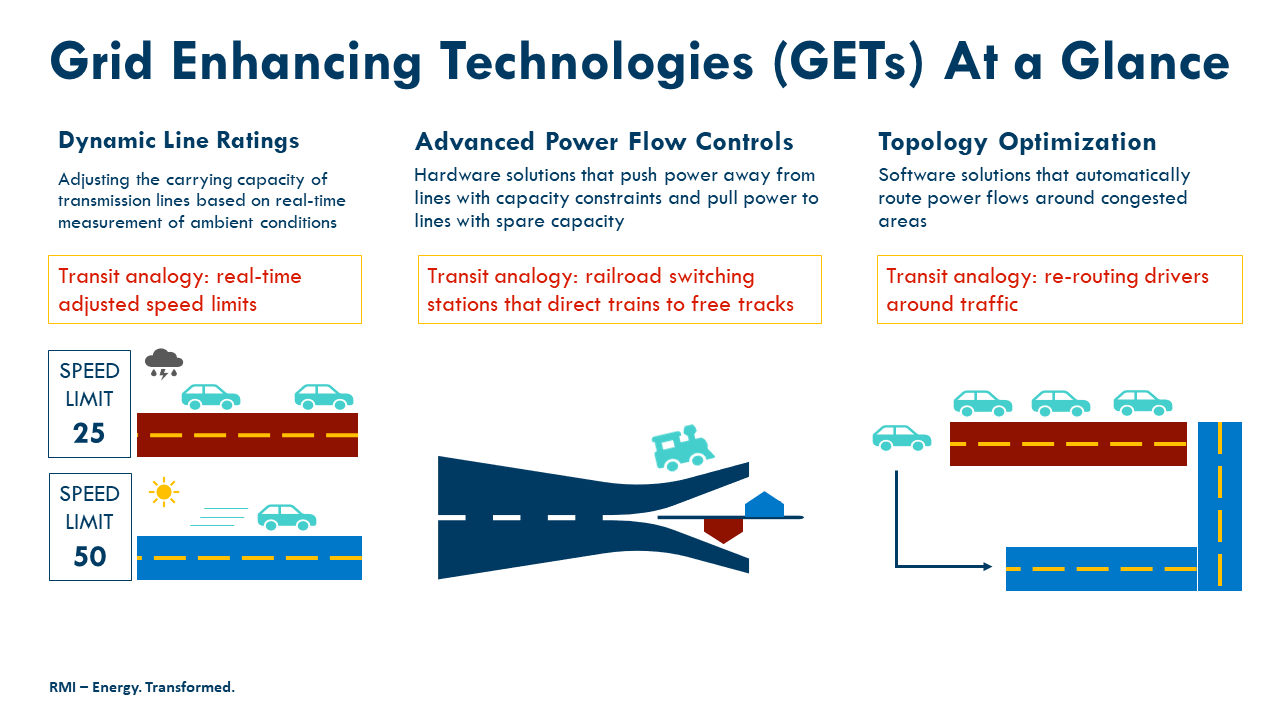
FERC Could Slash Inflation and Double Renewables with These Grid Upgrades
You don’t have to be an economist to know that inflation is one of the chief financial challenges facing Americans today. Key indicators point to energy prices as a principal driver of the increased cost of living, as gasoline soars over $5 per gallon and natural gas spikes lead to inflated utility bills.
Fortunately, a solution lies in plain sight, with the ability of inflation-busting technologies like wind and solar to help stabilize domestic energy prices and prevent future price spikes due to a reliance on volatile international fuel markets. In fact, recent RMI analysis shows that federal incentives for renewables could bring down utility bills by $5 billion annually, as soon as 2024.
However, clogged interconnection queues pose an increasing challenge for renewable energy developers, slowing the integration of clean and cheap resources onto the grid. Massive amounts of solar, wind, and storage are awaiting construction once they can procure transmission capacity to bring the electricity to market. More than 1,000 GW of generation and 400 GW of storage are currently delayed, which represents roughly 10 times the deployed capacity of solar PV and 60 times the deployed battery storage capacity on the grid today.
The Federal Energy Regulatory Commission (FERC) is working to tackle this issue as the commission engages in its second transmission Notice of Proposed Rulemaking (NOPR), issued on June 16. The proposed new rule, which is now open to public comment, could be an important first step that would include several reforms to decrease interconnection wait times, which currently average an absurd 3.5 years.
But to make significant headway, FERC needs to go further. One critical need is new rules to increase the implementation of grid-enhancing technologies (GETs). These upgrades represent low-hanging fruit for alleviating grid congestion by optimizing the transfer capacity of existing power lines — thereby opening the door for more renewables to connect to the grid.
What Are Grid-Enhancing Technologies?
GETs are a set of technologies designed to allow existing grid infrastructure to transport more electricity. The most common GETs are dynamic line ratings (DLRs), advanced power flow controls, and topology optimization (see Exhibit 1 below). A study by the Brattle Group in Kansas and Oklahoma found that implementing GETs could double renewable energy uptake on the grid and that the investments would pay for themselves in just six months. Deploying GETs is the equivalent of conducting an energy efficiency retrofit for the grid, maximizing the potential of existing infrastructure to save customers money. This is critical, because new transmission lines are more expensive than GETs and can take a long time to site, permit, and build, even with proposed FERC reforms. GETs can help free up existing line capacity and allow for the integration of more renewable projects in the near term to provide timely relief for high energy prices.
Exhibit 1: Examples of common GETs
Source: Katie Siegner (RMI)
With the interconnection queue rulemaking, FERC took an important first step by requiring transmission providers to evaluate GETs as an alternative to traditional grid upgrades if requested by an interconnection customer. Requiring utilities to evaluate the benefits of new transmission technologies for alleviating grid congestion is critical, and the commission should consider additional requirements. One option proposed by the WATT Coalition is to require transmission operators to install GETs if the operators’ internal analysis shows that benefits outweigh the costs. Cost-benefit analysis could be required not only if requested by an interconnection customer, but also for regular operations and long-term planning.
However, requirements are likely not enough on their own and will need to be supported with incentives to reward utilities for deploying GETs in grid upgrades. Current “cost of service” regulation, which tends to bias utility investment toward large, capital-intensive projects, discourages regulated utilities from implementing this kind of low-capital technology. During the NOPR hearing on the interconnection queue, FERC Chair Richard Glick indicated that incentives could be revisited in a future rulemaking. One possible solution is a shared savings incentive for GETs, an example of which the WATT Coalition recommended. This model would allow transmission owners to profit from a share of the achieved cost savings, while still earning the usual rate of return on the cost of service. The WATT Coalition model would require projects to deliver benefits that outweigh the costs by a ratio of four to one, while deploying technology that increases capacity, efficiency, or resilience.
Additional Reforms to Alleviate Grid Congestion
While GETs are a key tool for freeing up grid capacity in the near term, FERC must continue to reform other transmission rules to maximize the potential for renewables to bring down both costs and emissions. Glick suggested that FERC may take up “participant funding” at a later date, which could help to more evenly distribute the costs related to interconnection upgrades among those who benefit. Also of great importance are reforms to interregional transmission planning, which are critical to expedite the build-out of high-capacity, long-distance transmission lines to transport renewables from areas with abundant, cheap wind and solar resources to load centers, while improving the resilience of the grid to extreme weather events.
As Americans increasingly feel the squeeze of inflation due in part to reliance on volatile fuel markets, there has never been a more urgent need to address the clogged interconnection queues that are holding back access to clean and cheap renewable energy. Expediting the build-out of long-range transmission lines is essential for the United States to meet clean energy goals, and that process cannot happen fast enough. With regulatory reform for GETs, FERC has an opportunity to help bring down energy costs in the near term by unlocking the potential of domestic renewable energy resources.
